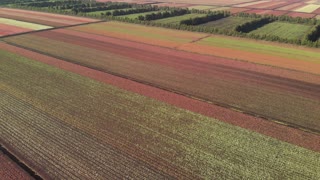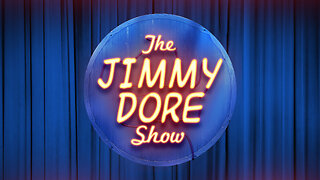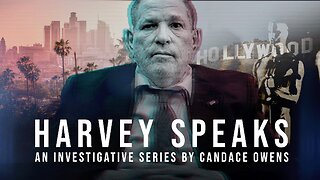Premium Only Content

NeRF: Representing Scenes as Neural Radiance Fields for View Synthesis (ML Research Paper Explained)
#nerf #neuralrendering #deeplearning
View Synthesis is a tricky problem, especially when only given a sparse set of images as an input. NeRF embeds an entire scene into the weights of a feedforward neural network, trained by backpropagation through a differential volume rendering procedure, and achieves state-of-the-art view synthesis. It includes directional dependence and is able to capture fine structural details, as well as reflection effects and transparency.
OUTLINE:
0:00 - Intro & Overview
4:50 - View Synthesis Task Description
5:50 - The fundamental difference to classic Deep Learning
7:00 - NeRF Core Concept
15:30 - Training the NeRF from sparse views
20:50 - Radiance Field Volume Rendering
23:20 - Resulting View Dependence
24:00 - Positional Encoding
28:00 - Hierarchical Volume Sampling
30:15 - Experimental Results
33:30 - Comments & Conclusion
Paper: https://arxiv.org/abs/2003.08934
Website & Code: https://www.matthewtancik.com/nerf
My Video on SIREN: https://youtu.be/Q5g3p9Zwjrk
Abstract:
We present a method that achieves state-of-the-art results for synthesizing novel views of complex scenes by optimizing an underlying continuous volumetric scene function using a sparse set of input views. Our algorithm represents a scene using a fully-connected (non-convolutional) deep network, whose input is a single continuous 5D coordinate (spatial location (x,y,z) and viewing direction (θ,ϕ)) and whose output is the volume density and view-dependent emitted radiance at that spatial location. We synthesize views by querying 5D coordinates along camera rays and use classic volume rendering techniques to project the output colors and densities into an image. Because volume rendering is naturally differentiable, the only input required to optimize our representation is a set of images with known camera poses. We describe how to effectively optimize neural radiance fields to render photorealistic novel views of scenes with complicated geometry and appearance, and demonstrate results that outperform prior work on neural rendering and view synthesis. View synthesis results are best viewed as videos, so we urge readers to view our supplementary video for convincing comparisons.
Authors: Ben Mildenhall, Pratul P. Srinivasan, Matthew Tancik, Jonathan T. Barron, Ravi Ramamoorthi, Ren Ng
Links:
TabNine Code Completion (Referral): http://bit.ly/tabnine-yannick
YouTube: https://www.youtube.com/c/yannickilcher
Twitter: https://twitter.com/ykilcher
Discord: https://discord.gg/4H8xxDF
BitChute: https://www.bitchute.com/channel/yann...
Minds: https://www.minds.com/ykilcher
Parler: https://parler.com/profile/YannicKilcher
LinkedIn: https://www.linkedin.com/in/yannic-ki...
BiliBili: https://space.bilibili.com/1824646584
If you want to support me, the best thing to do is to share out the content :)
If you want to support me financially (completely optional and voluntary, but a lot of people have asked for this):
SubscribeStar: https://www.subscribestar.com/yannick...
Patreon: https://www.patreon.com/yannickilcher
Bitcoin (BTC): bc1q49lsw3q325tr58ygf8sudx2dqfguclvngvy2cq
Ethereum (ETH): 0x7ad3513E3B8f66799f507Aa7874b1B0eBC7F85e2
Litecoin (LTC): LQW2TRyKYetVC8WjFkhpPhtpbDM4Vw7r9m
Monero (XMR): 4ACL8AGrEo5hAir8A9CeVrW8pEauWvnp1WnSDZxW7tziCDLhZAGsgzhRQABDnFy8yuM9fWJDviJPHKRjV4FWt19CJZN9D4n
-
 1:15
1:15
SvetlanaAna
4 years agoAerial view of colorful farm fields
55 -
 0:40
0:40
jetjockey
4 years ago $0.01 earnedDrone View: Softball Fields Carlon Park Selah Washington
165 -
 0:10
0:10
animals Funny
4 years agoYoung chicks eat grain between fields View of GM
53 -
 LIVE
LIVE
The Jimmy Dore Show
23 minutes agoPutin Offers U.S. a BETTER DEAL on Rare Earth Metals! Flu Shots Are a Proven Scam! w/ Mikki Willis
4,353 watching -
 42:47
42:47
Kimberly Guilfoyle
4 hours agoThe Trump effect: More Major Investment, Plus America First at Home & Abroad. Live w/Ned Ryun & Brett Tolman | Ep. 201
25.2K14 -
 1:29:23
1:29:23
Redacted News
2 hours agoWW3 ALERT! Europe pushes for war against Russia as Trump pushes peace and cutting off Zelensky
49.1K140 -
 LIVE
LIVE
Dr Disrespect
7 hours ago🔴LIVE - DR DISRESPECT - PUBG - 5 CHICKEN DINNERS CHALLENGE!
2,603 watching -
 57:56
57:56
Candace Show Podcast
6 hours agoHarvey Speaks: The Project Runway Production | Ep 1
61.9K28 -
 LIVE
LIVE
CatfishedOnline
2 hours agoRacist Lady Shocked After Sending Money to a Nigeria Romance Scammer
192 watching -
 56:45
56:45
VSiNLive
2 hours agoFollow the Money with Mitch Moss & Pauly Howard | Hour 1
15.6K